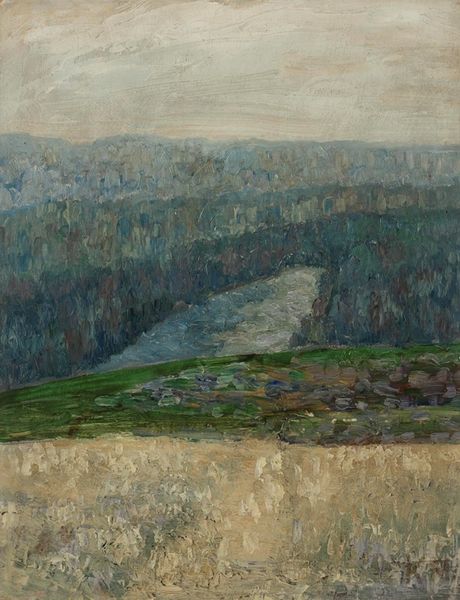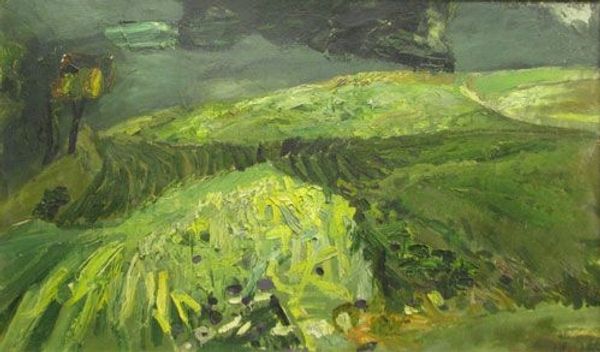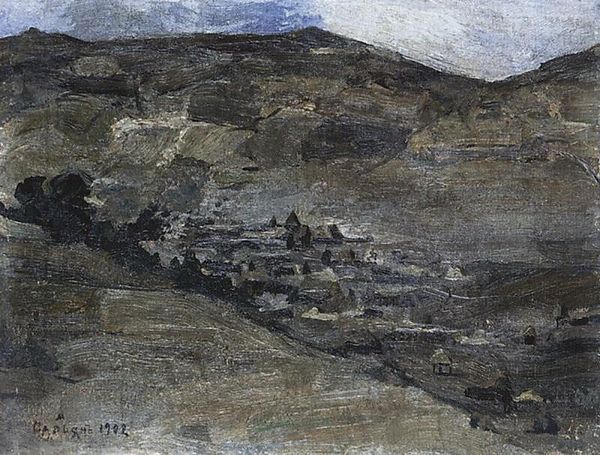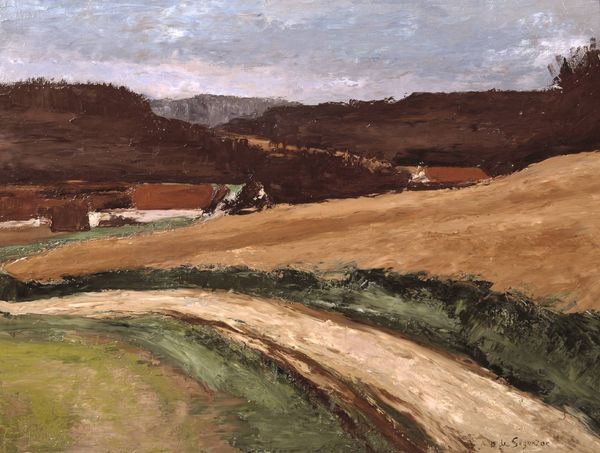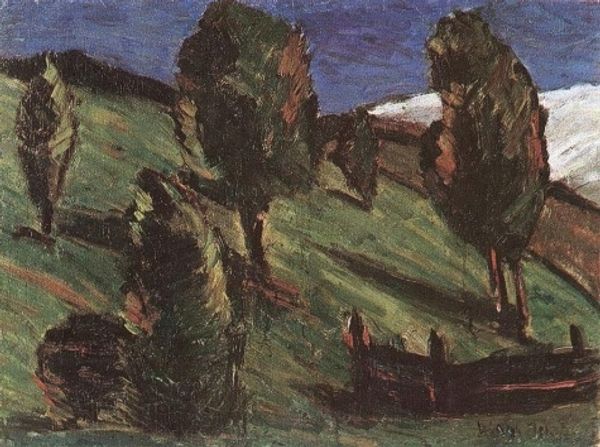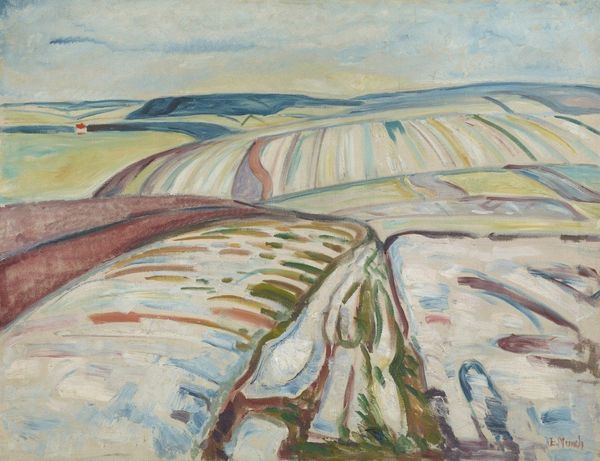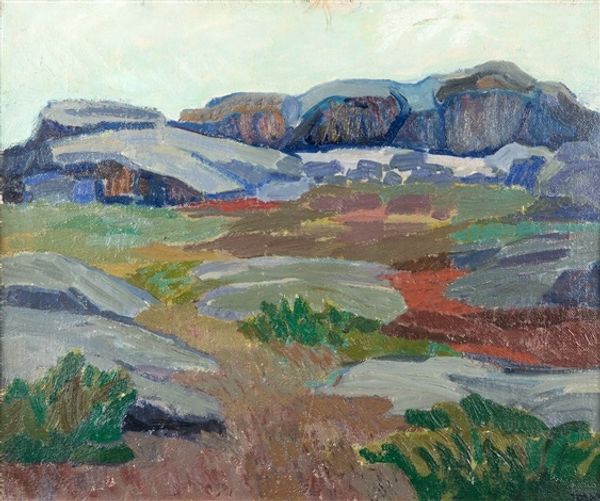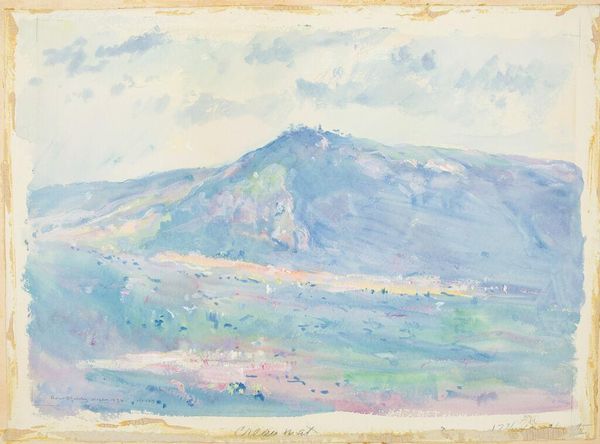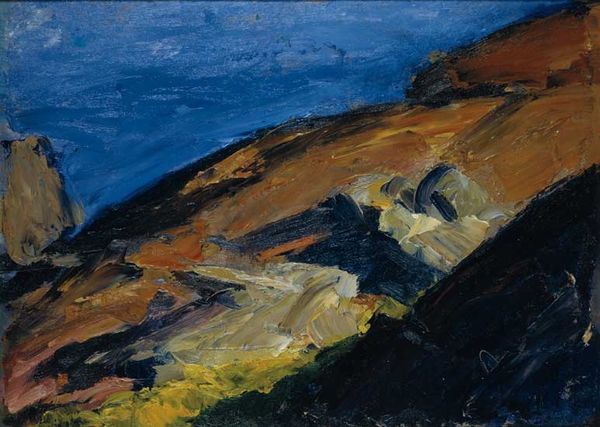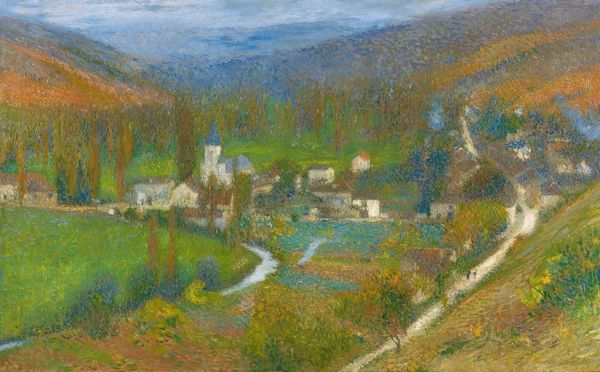
Copyright: Public domain
Theodore Robinson made this small oil painting of Jamaica, Vermont, in 1892, probably en plein air. The loose brushstrokes and muted palette capture the essence of a rural landscape, but it's the materiality of the paint itself that tells a deeper story. Robinson, like many Impressionists, embraced a direct, almost artisanal approach to painting. Notice how the thick, visible strokes of the brush create a tactile surface, reflecting the artist's physical engagement with the medium. The rough texture and earthy tones evoke the ruggedness of the Vermont countryside and the hard labor of its inhabitants. The painting's unpretentious style aligns it with the values of the Arts and Crafts movement, which championed handcrafted objects over mass-produced goods. By celebrating the handmade quality of his art, Robinson elevated the ordinary and connected with the dignity of labor, offering a glimpse into the social fabric of rural America. This wasn't just about depicting a scene, but about honoring a way of life through the very act of making.
Comments
No comments
Be the first to comment and join the conversation on the ultimate creative platform.


